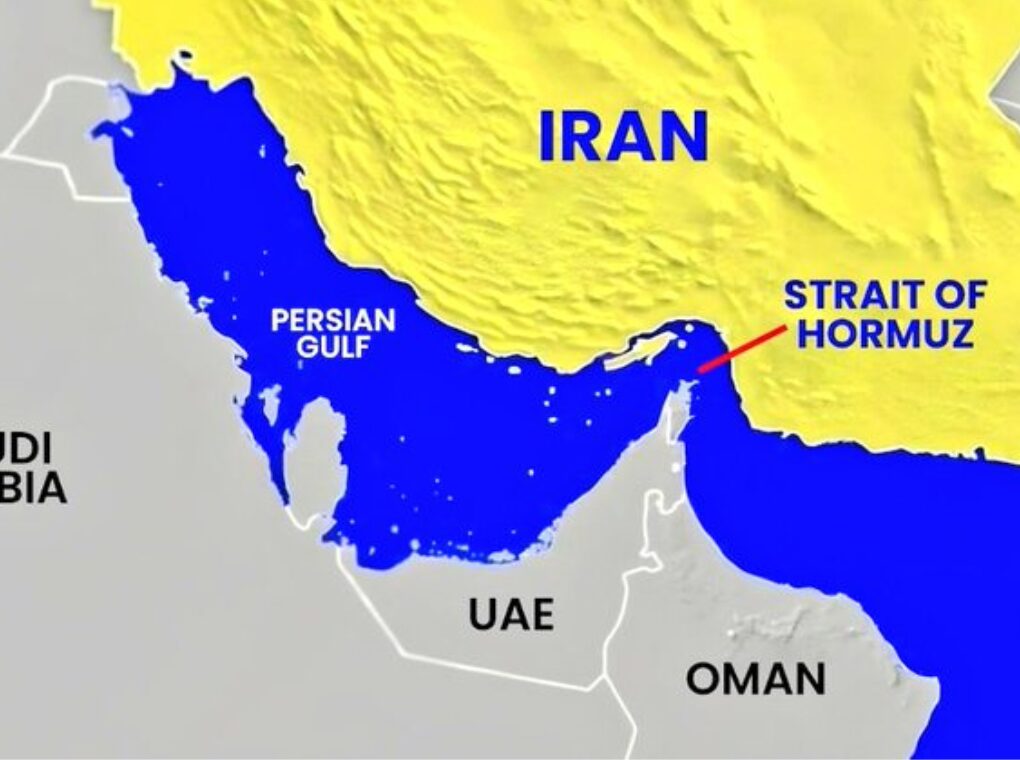In further Escalation of tensions in the Middle East, Iran has officially closed the Strait of Hormuz, the world’s most vital oil transit chokepoint, following direct military strikes by the United States on three of its nuclear facilities. The closure has sent immediate shockwaves through global markets and raised fears of a worldwide energy and economic crisis.
The move comes just hours after U.S. President Donald Trump confirmed a series of airstrikes on Iranian nuclear enrichment sites at Fordow, Natanz, and Esfahan, marking the most aggressive U.S. military action against Iran since the 1979 Islamic Revolution.
In response, Brigadier General Alireza Tangsiri, commander of Iran’s Islamic Revolutionary Guard Corps Navy, announced, “The Strait of Hormuz will be closed within a few hours. Our national security demands decisive action.”
What the Closure Means?
The Strait of Hormuz, a narrow 33-kilometre-wide waterway between Iran and Oman, is responsible for transporting nearly 20% of the world’s oil supply, or around 18–20 million barrels per day. It is also the route for nearly a fifth of global liquefied natural gas (LNG) shipments, including from Qatar, the world’s largest exporter.
With the waterway now closed, oil exports from major producers including Saudi Arabia, Iraq, the UAE, Kuwait, and Iran itself have effectively been halted. While limited capacity exists to reroute some shipments via pipelines in Saudi Arabia and the UAE (combined capacity of around 2.6 million barrels/day), these alternatives fall far short of meeting global demand.
Immediate Global Fallout
Oil prices surged overnight, with Brent crude crossing $96 per barrel and West Texas Intermediate (WTI) reaching $90. Analysts warn that prices could skyrocket to $120–$150 if the closure continues.
Global stock markets plunged, with energy, aviation, and shipping sectors hit hardest.
Shipping insurers raised war-risk premiums, while more than 1,000 vessels have reported GPS interference and navigation disruptions in the region since last week.
The U.S. Fifth Fleet, based in Bahrain, has been placed on high alert, with Pentagon officials confirming preparations for possible mine-clearing operations and escort missions to reopen the waterway.
India Faces Severe Energy Shock
For India, the closure represents an economic and strategic crisis. Asia’s third-largest economy imports nearly 90% of its crude oil, with 40% of that traveling through the Strait of Hormuz.
Key impacts include:
LNG imports disrupted: Qatar, which supplies over 80% of India’s LNG, relies solely on Hormuz.
Inflationary pressures rising: A fuel price surge is expected to drive up transport, food, and electricity costs.
Rupee under pressure: Currency markets reacted with sharp volatility amid fears of widening trade deficits.
Strategic oil reserves activated: The Indian government may soon tap into its 74-day reserve capacity to cushion the blow.
Oil Minister Hardeep Singh Puri said in a brief statement: “We are closely monitoring the situation. Contingency plans are being activated. Alternative sources and routes are under negotiation.”
Iran’s Strategic Gamble
This is the first time Iran has followed through on its decades-old threat to block the Strait. Experts believe the decision is part of a high-stakes strategy to pressure the West into halting further attacks and sanctions.
Despite the risk to its own economy — Iran exports most of its oil through Hormuz — Tehran appears willing to endure short-term pain to retaliate against what it views as existential aggression.
“Iran is using the Strait as a geopolitical weapon,” said Dr. Reza Farahmand, a political analyst in Tehran. “It’s a message: disrupt our sovereignty, and we will disrupt your energy.”
Background: A Chokepoint Long Feared
This isn’t the first time tensions have flared at Hormuz:
In 2012, Iran threatened closure over EU sanctions.
In 2019, a British-flagged tanker was seized.
In 2021, an Israeli-managed tanker attack killed two.
In 2023–24, three commercial vessels were seized or harassed near the Strait.
Yet, the latest action marks the first full-scale closure — and potentially the most dangerous escalation in decades.
What’s Next?
Diplomatic channels are now in overdrive. The UN Security Council is expected to hold an emergency session within 24 hours. Meanwhile, U.S. and European officials are reportedly considering further sanctions and potential military escort operations to reopen shipping lanes.
A prolonged closure would not only destabilize oil markets but could also push the global economy into recession. According to JP Morgan, sustained disruption at Hormuz could slash global GDP by 1–2%, especially as inflation and energy insecurity spread beyond the region.
The Strait of Hormuz, long a symbol of geopolitical fragility, has now become the epicenter of a global crisis. For India and much of the world, the coming days may determine not only the future of energy prices but the very structure of global security and trade.
“One narrow waterway. One bold decision. The world watches as the oil lifeline of the planet are choked by war.”
